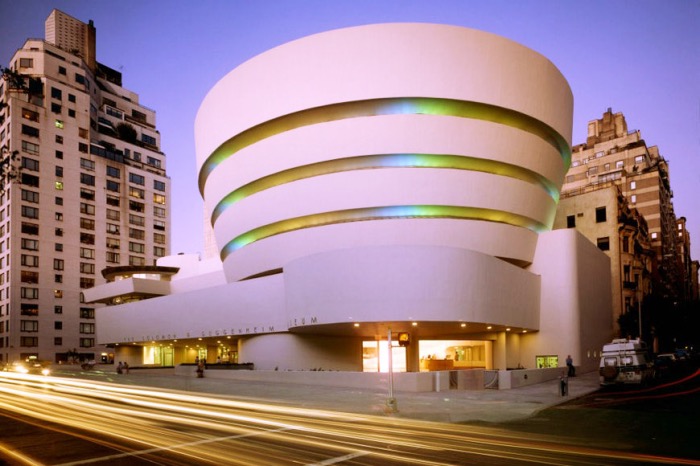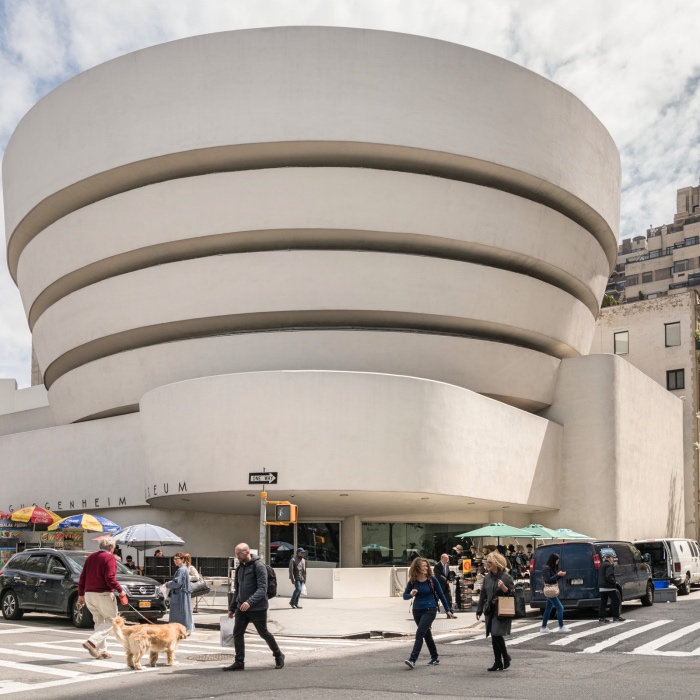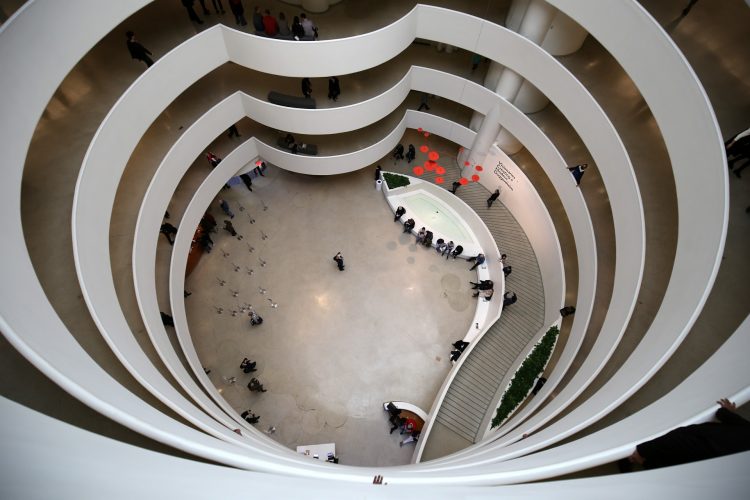
Guggenheim New York
The Guggenheim Museum in New York is a perfect representation of modern and contemporary art. Not surprisingly, the site is known worldwide for its imaginative innovative architecture as well as its eclectic collections and constantly changing temporary exhibitions.
Needless to say, it is located in New York City, one of the iconic cities of American culture. Indeed, visitors to the metropolis cannot skip a stop at the Guggenheim Museum in New York, as it is part of the urban connective tissue. Nonetheless, it is one of the most beloved and hailed attractions by tourists, especially those from Europe.
The history of the Guggenheim Museum in New York

But how did this artistic monument come into being? And who designed its structure? Actually, the history of the museum is in itself a narrative that is woven into the artistic textures of the place, having enjoyed the collaboration of the most iconic and important artists on the American scene. The narrative of the museum’s construction, therefore, is in its own right a fascinating journey through time.
THE BEGINNING MARKED BY SOLOMON R. GUGGENHEIM’S VISION.
The museum began in the form of an idea. The thought came to entrepreneur and art collector Solomon R. Guggenheim. He was, in fact, the first to realize in hypothetical connotations a museum that was both an exhibition space and itself a work of art.
Before he left, he had hiccups, as the imaginative project on paper seemed impossible to realize. However, in 1937, he called in a distinguished architect with the conviction that in his hands the project could take shape.
Therefore, the design passed to architect Frank Lloyd Wright, who was commissioned to devise a building that would break the rather closed and linear architectural conventions of the time.
As is easy to imagine, Frank Lloyd Wright accepted the challenge, indeed he was particularly enthusiastic about it. Therefore, he immediately began work on the museum project. In this context, two highly perspective visions came into relationship, and together they sparked.
For Guggenheim, the museum had to resemble a space in harmony with the works of art present, so as to achieve a whole and create a place where architecture and art merge into a single experience, effectively breaking down visible boundaries.
From its location, Wright developed a revolutionary idea that can still be appreciated today. In fact, the Guggenheim Museum is a building in the shape of an upward spiral, with a central atrium that allows visitors to admire the artworks as they ascend in the direction of the upper floors.
FRANK LLOYD WRIGHT’S UNMISTAKABLE DESIGN
Perhaps the Guggenheim Museum is one of Frank Lloyd Wright’s most famous works, although it boasts several other unusual and emblematic buildings in the arsenal. However, when we think of modern art, here the museum becomes something of an icon.
Its unique spiral shape, permeated by curved and sinuous lines, represented a real design and technical challenge in relation to the time. For this reason, architect Wright had to use innovative materials as well as cutting-edge construction techniques, which were later exploited for other buildings.
The pivot of the building can be said to develop around a large central atrium, which serves as the starting point of the exhibition route. The interior walls were made in the form of curves with no right angles, so as to create a feeling of continuity and timelessness.
In addition, natural light filters through the domed windows, thus going to illuminate the various exhibition spaces not provocatively but gently. This solution allows it not to interfere with the natural coloring of the paintings or artworks present.
But, to realize the project, the architect had to endure numerous challenges and setbacks. Primarily regarding the idea, as the form raised criticism and doubts about the technical feasibility of the building.
As if this were not enough, the land being built on boasted an irregular shape, which led to several stoppages during construction. This meant a substantial burden of delays and additional costs, which only fueled the controversy.
OPENING DAY FINALLY ARRIVES AND ITS DEVELOPMENT TODAY
After years of planning, arranging, and building, the Guggenheim Museum opened its doors to the public in 1959. The opening was a major media event for the entire art world. Not surprisingly, artists and intellectuals from all over the world attended.
The early years were filled with outstanding exhibitions and displays, through which the creator succeeded in solidifying the museum’s status as a representative icon of the world’s most important cultural center.
Inside the museum stayed works by international artists such as Picasso, Kandinsky and the American Andy Warhol. Their contribution to the museum was remarkable and they managed to make legendary a place that was born in the form of a simple idea.
Over time, the Guggenheim Museum has continued to evolve, expanding the present stable collections while offering numerous innovative and, above all, compelling temporary exhibitions.
In this way, the museum has managed to grasp and explore different artistic currents, from cubism to abstract expressionism, from pop art to Minimal Art, just to name a few of the best-known and best-loved.
In addition, several donations from private individuals have embellished the offerings, followed by as many targeted acquisitions. Today the Guggenheim Museum boasts the world’s most important collection of modern and contemporary art, featuring works by internationally renowned artists. And its design has become iconic and symbolic of New York art.

EXTENSION AND RENOVATION PROJECTS
In order to meet the museum’s needs, a number of expansion and renovation projects have been carried out, taking place in deferments over the years. For example, in 1992 Spanish architect Frank Gehry expanded the museum with an additional wing, called the Guggenheim Hermitage Museum, which is mostly home to temporary exhibitions.
Instead, a major renovation was completed in 2005, involving the entire structure designed by Frank Lloyd Wright, to which new galleries and visitor services were added. The upgrade was necessary to meet the needs of modern times.
The museum’s exhibition program has influenced generations of artists and intellectuals, but in addition to boasting the podium as a place steeped in art, the Guggenheim Museum has become a multicultural gathering and discussion point, ready to probe different backgrounds. Its particular structure has made the place an inspiration to creative dialogue, for as Solomon R. Guggenheim taught, an idea only takes shape if you truly believe in it.

